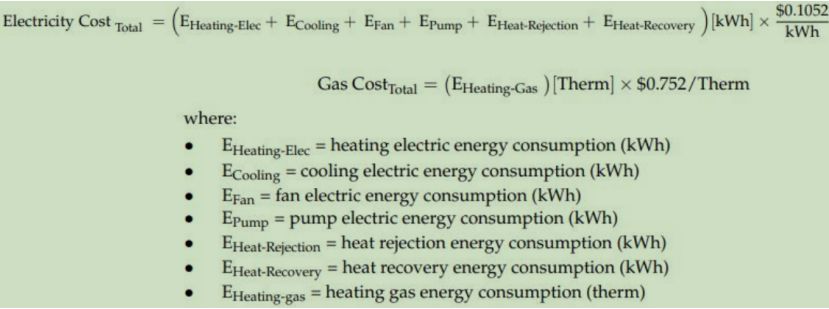Prepare A Project Report For Performance Analysis Of The Mechanical Building Servies (HVAC) On Office Spaces In Building And Energy Performance Predic
- Country :
Australia
Introduction:
The research will be focused on the mechanical building services for the building. The research work is application based and may be used for the design andinstallation of the HVAC components in the building. The aim of this assessment is focused on the designing the thermal load requirement of the building, selection of the equipment and installation so as to optimise the energy consumption by the building. In addition to that, the research aims to monitor the system performance and prediction of the energy usage by the equipment to meet the design criteria.
In order to analyse and improve numerous parameters connected to the building's energy system, computational software is used for thermal assessment and energy performance projection of commercial construction, such as office spaces. These factors encompass wall as well as roof components, ventilation and heating & cooling systems, insulating, and so on.
The functionality of the structure is modelled by the heat load software using information from the weather, building layout, and occupant characteristics. The building's overall energy use and thermal behaviour are then analysed under a variety of circumstances, including various weather systems, occupancy rates, and exterior factors that may affect energy consumption such as lightings.
The research aims to forecasts energy consumption, greenhouse emissions, and operational expenses, enabling the performance of buildings to be optimised by choosing the most appropriate design choices and energy-saving measures. In besides making sure that the building's energy requirements are efficiently satisfied, it also aids in identifying prospective improvement opportunities. The analysis enables the design group to make well-informed judgements about the building's energy focusing on HVAC systems, simulating various scenarios.
The thermal assessment and energy efficiency modelling process is a crucial component of construction design and aids to ensure that the structure is functional, comfortable, and energy efficient. Hence, the thermal analysis improves the quality of indoor air and overall building sustainability consequently reducing energy usage.
Case Study:
The building envelope of the 4 floors for the office space is considered for the design and installation of the mechanical building services Heating, Ventilation and Air Conditioning (HVAC) located here in Sydney. The central plant on the building comprises of the AHU, Variable Air Volume boxes, and Chillers. The area of space to be conditioned and the occupancy level to be determined.
Research Question Formulation:
The overall research will be focused on
- What is the result on examining the energy trend in a building?
- What are the identified primary heat load sources in a building?
- How do we develop the approaches to reduce energy consumption in buildings with a particular emphasis on cooling load reduction?
Methodologies
In the buildings, lighting consumes 38.9% of the building's overall electrical consumption, while the HVAC system consumes 75% of the building's total gas. The planned energy-saving strategy calls for limiting the amount of exterior lighting, implementing an economiser, using low-e glass, and installing an efficient chiller (Nazi et al., 2015). Latent and sensible cooling loads affect a space's overall cooling requirements, with sensible cooling loads coming from solar heat gain, lighting systems, people, and equipment. When this is happening, latent load is produced by people, outdoor air leaks, and operations like steaming. Based on these circumstances, the heating cooling load requirements are calculated and thereby the equipment is selected. Following those procedures, the total energy consumption are calculated. Different case study for the equipment selection is considered so as to determine the optimum energy consumption by the building.
An example for the energy consumption calculation on installation of the HVAC system is determined from the methodology below.
Cooling system, including the pre cooling coil, main cooling coil, supplemental cooling coil , are included in the Ecooling-elec category. Similar to this, Efan takes into account the energy consumption of every fan in a network, as well as the supply, exhaust, return, and relief fans. All hot-water pumps, chilled water pumps, and condensing water pumps that are a part of the system are collectively referred to as EPump. The energy consumption of that specific component is used to account for the effects of controls on HVAC systems, such as fan pressure difference and variable frequency control. With a variable air volume (VAV) arrangement with static pressure reset, for instance, the energy consumption of a fan will normally be lower than it would be in a similar system without static pressure (Goel et al., 2021).
The simulation makes use of a unique HVAC system type named Camel Load, to calculate the annual heating, cooling, and total loads for every building. In accordance with the system requirements, this system determines the annual heating and cooling load (including vent load) at each zone in the building enclosure and provides heating or cooling air to satisfy the predefined at a system performance of 100%. This system accurately reflects the whole load placed on the HVAC system because it contains setpoints for controlling external air quality, temperature, and humidity.
The formula for the calculation is snipped below:

To sum up, the methodology involved in this engineering design project is to determine the heating/cooling load requirements for the building enclosure. The calculation is conducted using the CamelLoad software. Considering the load requirements, different scenarios on the equipment selection are set up to calculate the energy usage over the period of the reference time. Referencing those case studies, the particular equipment are selected to optimize the energy usage based on the estimation of the energy consummation.

